-
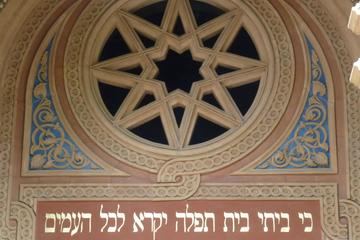 Choral Temple (Templul Coral)
Choral Temple (Templul Coral) One of the first synagogues in Bucharest was the Choral Temple, which was completed in 1857 by architects Enderle and Freiwald; it is a copy of the Leopoldstadt-Tempelgasse Great Synagogue in Vienna and has a façade decorated in Moorish style with yellow-and-red patte
Choral Temple (Templul Coral)
Choral Temple (Templul Coral) One of the first synagogues in Bucharest was the Choral Temple, which was completed in 1857 by architects Enderle and Freiwald; it is a copy of the Leopoldstadt-Tempelgasse Great Synagogue in Vienna and has a façade decorated in Moorish style with yellow-and-red patte
-
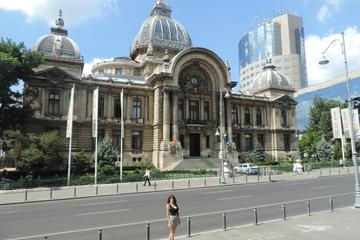 CEC Palace
CEC Palace Built in the late 1890s and opened at the turn of the 20th century on one of Bucharest’s main boulevards, the CEC Palace was designed by French architect Paul Gottereau and the construction of this fine Beaux Arts masterpiece was overseen by Romanian architect Ion Socolescu. Designated
CEC Palace
CEC Palace Built in the late 1890s and opened at the turn of the 20th century on one of Bucharest’s main boulevards, the CEC Palace was designed by French architect Paul Gottereau and the construction of this fine Beaux Arts masterpiece was overseen by Romanian architect Ion Socolescu. Designated
-
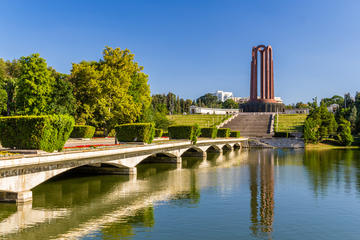 Carol Park (Liberty Park)
Carol Park (Liberty Park) With a history dating back to the early 1900s, Carol Park (Liberty Park) is one of Bucharest’s oldest parks, built by French designer Eduard Redont to mark the Jubilee of King Carol I. With its glittering lake, tree-lined esplanade and landscaped gardens sprawling over 30
Carol Park (Liberty Park)
Carol Park (Liberty Park) With a history dating back to the early 1900s, Carol Park (Liberty Park) is one of Bucharest’s oldest parks, built by French designer Eduard Redont to mark the Jubilee of King Carol I. With its glittering lake, tree-lined esplanade and landscaped gardens sprawling over 30
-
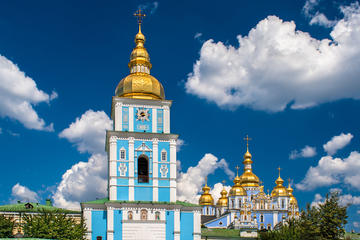 Brukenthal National Museum
Brukenthal National Museum Romania’s oldest national museum, the Brukenthal National Museum is actually made up of six distinctive museums, but it’s the Brukenthal art gallery that takes center-stage, in prize place on the Big Square (Piața Mare). Housed in the 18th-century Baroque-style Brukentha
Brukenthal National Museum
Brukenthal National Museum Romania’s oldest national museum, the Brukenthal National Museum is actually made up of six distinctive museums, but it’s the Brukenthal art gallery that takes center-stage, in prize place on the Big Square (Piața Mare). Housed in the 18th-century Baroque-style Brukentha
-
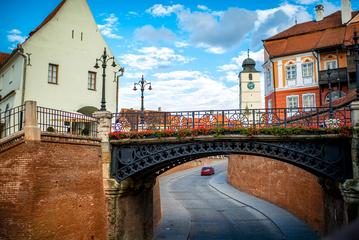 Bridge of Lies
Bridge of Lies Framed by old-fashioned lampposts and lined with colourful flowers, the iron footbridge running between Piata Mica and Piata Huet makes for a romantic spot, looking down over Ocnei street below. But if you believe local legend, Sibiu’s landmark ‘Bridge of Lies’ is much more than a p
Bridge of Lies
Bridge of Lies Framed by old-fashioned lampposts and lined with colourful flowers, the iron footbridge running between Piata Mica and Piata Huet makes for a romantic spot, looking down over Ocnei street below. But if you believe local legend, Sibiu’s landmark ‘Bridge of Lies’ is much more than a p
-
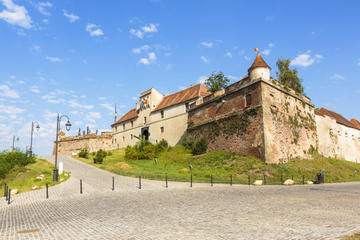 Brasov Citadel (Cetatea Brasovului)
Brasov Citadel (Cetatea Brasovului) In medieval times, Braşov was settled by Saxons from present-day Germany, and as the city suffered repeated attacks by Turks and Tatars from the east, they fortified their city in the 15th century. The resulting 1.8-mile (3-km) defense wall originally wrapped ar
Brasov Citadel (Cetatea Brasovului)
Brasov Citadel (Cetatea Brasovului) In medieval times, Braşov was settled by Saxons from present-day Germany, and as the city suffered repeated attacks by Turks and Tatars from the east, they fortified their city in the 15th century. The resulting 1.8-mile (3-km) defense wall originally wrapped ar
-
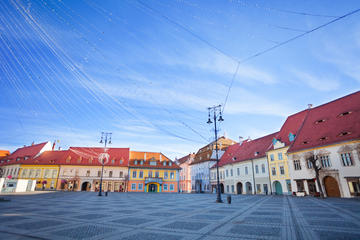 Big Square (Piata Mare)
Big Square (Piata Mare) With a width of over 140 meters, Sibiu’s Big Square (Piata Mare) is aptly named and for visitors, the enormous pedestrianized square makes a strategic starting point for a tour of the city. Piata Mare, along with neighboring Piata Mica and Piata Huet, makes up the main hub
Big Square (Piata Mare)
Big Square (Piata Mare) With a width of over 140 meters, Sibiu’s Big Square (Piata Mare) is aptly named and for visitors, the enormous pedestrianized square makes a strategic starting point for a tour of the city. Piata Mare, along with neighboring Piata Mica and Piata Huet, makes up the main hub
-
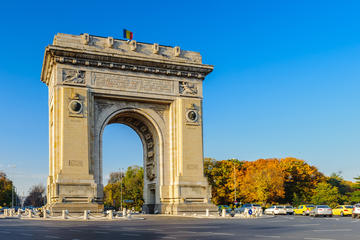 Arch of Triumph (Arcul de Triumf)
Arch of Triumph (Arcul de Triumf) First built in 1878 as a wooden monument to mark Romania’s Independence, Bucharest’s Arch of Triumph (Arcul de Triumf) has long been one of the city’s most memorable landmarks. Although rebuilt again after WWI, the current Arch of Triumph is the work of architect
Arch of Triumph (Arcul de Triumf)
Arch of Triumph (Arcul de Triumf) First built in 1878 as a wooden monument to mark Romania’s Independence, Bucharest’s Arch of Triumph (Arcul de Triumf) has long been one of the city’s most memorable landmarks. Although rebuilt again after WWI, the current Arch of Triumph is the work of architect
-
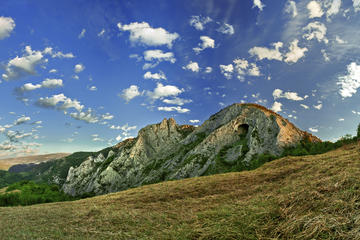 Apuseni Natural Park
Apuseni Natural Park With its otherworldly karst landscape, riddled with caves, cliffs and cirques, the unique topography of Apuseni Natural Park makes it one of Romania’s most mesmerizing natural wonders. Declared a protected area back in 2000, Apuseni is best known for its natural caves, of
Apuseni Natural Park
Apuseni Natural Park With its otherworldly karst landscape, riddled with caves, cliffs and cirques, the unique topography of Apuseni Natural Park makes it one of Romania’s most mesmerizing natural wonders. Declared a protected area back in 2000, Apuseni is best known for its natural caves, of
-
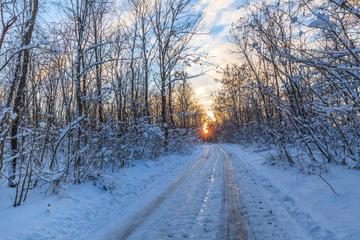 Comana Nature Park
Comana Nature Park A natural oasis of lush wetlands, ancient forests and sprawling marshes, just 30 km from Bucharest, the Comana Nature Park offers a tranquil retreat from the city, with almost 25,000 hectares of land. Designated a national reserve in 2004, Comana is one of Romania’s most bio-div
Comana Nature Park
Comana Nature Park A natural oasis of lush wetlands, ancient forests and sprawling marshes, just 30 km from Bucharest, the Comana Nature Park offers a tranquil retreat from the city, with almost 25,000 hectares of land. Designated a national reserve in 2004, Comana is one of Romania’s most bio-div
-
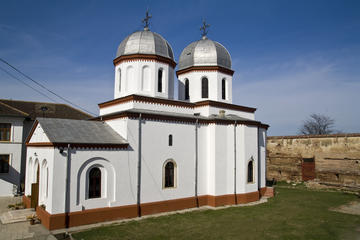 Comana Monastery
Comana Monastery Founded in 1471 by Vlad the Impaler (the real-life ‘Count Dracula’ who inspired Bram Stoker’s fictional character of the same name), the Comana Monastery has long been an intriguing site for fans. Legend has it that the headless body of Vlad the Impaler was even found during excav
Comana Monastery
Comana Monastery Founded in 1471 by Vlad the Impaler (the real-life ‘Count Dracula’ who inspired Bram Stoker’s fictional character of the same name), the Comana Monastery has long been an intriguing site for fans. Legend has it that the headless body of Vlad the Impaler was even found during excav
-
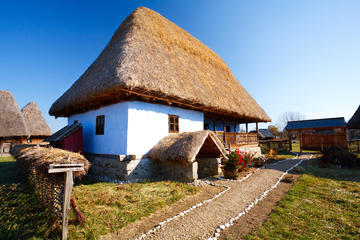 Village Museum (Muzeul Satului)
Village Museum (Muzeul Satului) Eastern Europe’s foremost open-air museum was opened in 1936 and presents a collection of more than 60 historic rural buildings from across Romania and of different eras, all carefully reassembled in 15 hectares of parkland on the shores of Lake Herăstrău in Buchare
Village Museum (Muzeul Satului)
Village Museum (Muzeul Satului) Eastern Europe’s foremost open-air museum was opened in 1936 and presents a collection of more than 60 historic rural buildings from across Romania and of different eras, all carefully reassembled in 15 hectares of parkland on the shores of Lake Herăstrău in Buchare
-
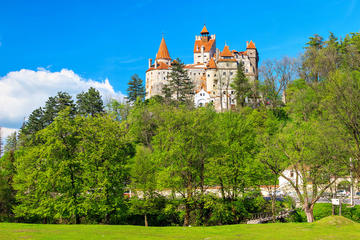 Bran Castle (Draculas Castle)
Bran Castle (Draculas Castle) Bram Stoker might not have visited Bran Castle, but this Romanian architectural icon was still the inspiration for his most famous work. Fans of his fiction can visit the supposed home of Count Dracula and explore the dark history of one of the worlds most famous cast
Bran Castle (Draculas Castle)
Bran Castle (Draculas Castle) Bram Stoker might not have visited Bran Castle, but this Romanian architectural icon was still the inspiration for his most famous work. Fans of his fiction can visit the supposed home of Count Dracula and explore the dark history of one of the worlds most famous cast
-
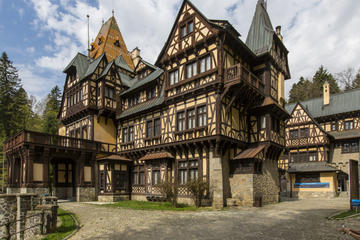 Pelisor Castle
Pelisor Castle Located directly next to Peles Castle, this impressive example of Romanian history was built between 1899 and 1902 but a Czech architect. Once the summer residence for the nation’s second king and queen who had an affection for the Byzantine and Celtic aesthetics found in the castle
Pelisor Castle
Pelisor Castle Located directly next to Peles Castle, this impressive example of Romanian history was built between 1899 and 1902 but a Czech architect. Once the summer residence for the nation’s second king and queen who had an affection for the Byzantine and Celtic aesthetics found in the castle
-
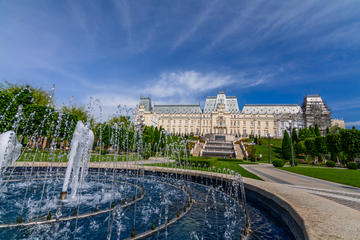 Iasi
Iasi Iasi is the largest city in eastern Romania, located near the border with Moldova. It has long been known as a leader of cultural, academic and artistic life in Romania and even served as the capital of the country from 1916 to 1918. Settlements in the area date back to the prehistoric age an
Iasi
Iasi Iasi is the largest city in eastern Romania, located near the border with Moldova. It has long been known as a leader of cultural, academic and artistic life in Romania and even served as the capital of the country from 1916 to 1918. Settlements in the area date back to the prehistoric age an
-
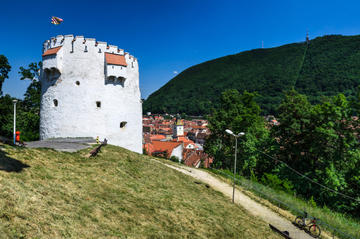 White Tower (Turnul Alb)
White Tower (Turnul Alb) The first settlers in Braşov were the Saxons, who came from present-day Germany, and the city became vulnerable to repeated raids by Turks and Tatars from the east. In the 15th century, the Saxons decided to fortify their city and built a 1.8-mile (3-km) defense wall that
White Tower (Turnul Alb)
White Tower (Turnul Alb) The first settlers in Braşov were the Saxons, who came from present-day Germany, and the city became vulnerable to repeated raids by Turks and Tatars from the east. In the 15th century, the Saxons decided to fortify their city and built a 1.8-mile (3-km) defense wall that
-
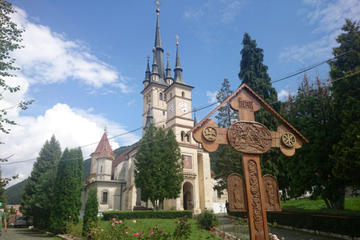 St Nicholas Church (Biserica Sf Nicolae)
St Nicholas Church (Biserica Sf Nicolae) The Schei district lies outside the fortified medieval walls of Braşov and was originally the area where Romanian nationals lived; up until the mid-17th century, they had to pay a toll to enter the Saxon inner city. It was here that the church of St Nichola
St Nicholas Church (Biserica Sf Nicolae)
St Nicholas Church (Biserica Sf Nicolae) The Schei district lies outside the fortified medieval walls of Braşov and was originally the area where Romanian nationals lived; up until the mid-17th century, they had to pay a toll to enter the Saxon inner city. It was here that the church of St Nichola
-
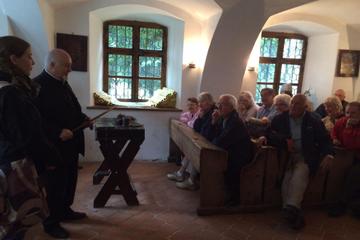 First Romanian School (Prima Scoala Romaneasca)
First Romanian School (Prima Scoala Romaneasca) Located outside the fortified walls of Braşov’s medieval heart, the district of Schei is a charming tangle of narrow streets and multi-colored houses. It was here where Romanian nationals congregated in the city and the area became a symbol of Romani
First Romanian School (Prima Scoala Romaneasca)
First Romanian School (Prima Scoala Romaneasca) Located outside the fortified walls of Braşov’s medieval heart, the district of Schei is a charming tangle of narrow streets and multi-colored houses. It was here where Romanian nationals congregated in the city and the area became a symbol of Romani
-
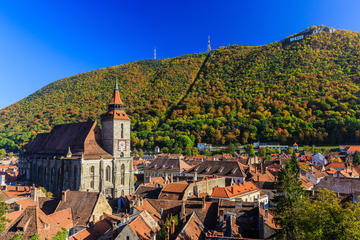 Black Church (Biserica Neagra)
Black Church (Biserica Neagra) Brasov’s monumental Black Church (Biserica Neagra) soars heavenwards at the southwestern end of the city’s focal Council Square (Piata Sfatului) and is the largest Gothic church in central Europe. Afloat with flying buttresses and a landmark tower, construction on th
Black Church (Biserica Neagra)
Black Church (Biserica Neagra) Brasov’s monumental Black Church (Biserica Neagra) soars heavenwards at the southwestern end of the city’s focal Council Square (Piata Sfatului) and is the largest Gothic church in central Europe. Afloat with flying buttresses and a landmark tower, construction on th
-
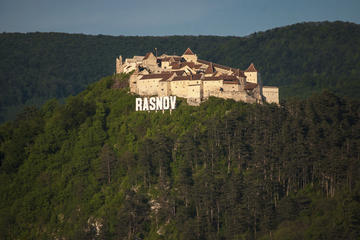 Rasnov Fortress
Rasnov Fortress Built between 1211 and 1225, this medieval fortress was originally constructed from wood and erected to protect Transylvanian villages from outside invasions. The impressive structure was later transformed into a stone dwelling where locals sought refuge from outsiders. Visitors ca
Rasnov Fortress
Rasnov Fortress Built between 1211 and 1225, this medieval fortress was originally constructed from wood and erected to protect Transylvanian villages from outside invasions. The impressive structure was later transformed into a stone dwelling where locals sought refuge from outsiders. Visitors ca
Total
333 -travel
FirstPage PreviousPage NextPage LastPage CurrentPage:
2/17 20-travel/Page Goto:
 Choral Temple (Templul Coral)
Choral Temple (Templul Coral) One of the first synagogues in Bucharest was the Choral Temple, which was completed in 1857 by architects Enderle and Freiwald; it is a copy of the Leopoldstadt-Tempelgasse Great Synagogue in Vienna and has a façade decorated in Moorish style with yellow-and-red patte
Choral Temple (Templul Coral)
Choral Temple (Templul Coral) One of the first synagogues in Bucharest was the Choral Temple, which was completed in 1857 by architects Enderle and Freiwald; it is a copy of the Leopoldstadt-Tempelgasse Great Synagogue in Vienna and has a façade decorated in Moorish style with yellow-and-red patte
 CEC Palace
CEC Palace Built in the late 1890s and opened at the turn of the 20th century on one of Bucharest’s main boulevards, the CEC Palace was designed by French architect Paul Gottereau and the construction of this fine Beaux Arts masterpiece was overseen by Romanian architect Ion Socolescu. Designated
CEC Palace
CEC Palace Built in the late 1890s and opened at the turn of the 20th century on one of Bucharest’s main boulevards, the CEC Palace was designed by French architect Paul Gottereau and the construction of this fine Beaux Arts masterpiece was overseen by Romanian architect Ion Socolescu. Designated
 Carol Park (Liberty Park)
Carol Park (Liberty Park) With a history dating back to the early 1900s, Carol Park (Liberty Park) is one of Bucharest’s oldest parks, built by French designer Eduard Redont to mark the Jubilee of King Carol I. With its glittering lake, tree-lined esplanade and landscaped gardens sprawling over 30
Carol Park (Liberty Park)
Carol Park (Liberty Park) With a history dating back to the early 1900s, Carol Park (Liberty Park) is one of Bucharest’s oldest parks, built by French designer Eduard Redont to mark the Jubilee of King Carol I. With its glittering lake, tree-lined esplanade and landscaped gardens sprawling over 30
 Brukenthal National Museum
Brukenthal National Museum Romania’s oldest national museum, the Brukenthal National Museum is actually made up of six distinctive museums, but it’s the Brukenthal art gallery that takes center-stage, in prize place on the Big Square (Piața Mare). Housed in the 18th-century Baroque-style Brukentha
Brukenthal National Museum
Brukenthal National Museum Romania’s oldest national museum, the Brukenthal National Museum is actually made up of six distinctive museums, but it’s the Brukenthal art gallery that takes center-stage, in prize place on the Big Square (Piața Mare). Housed in the 18th-century Baroque-style Brukentha
 Bridge of Lies
Bridge of Lies Framed by old-fashioned lampposts and lined with colourful flowers, the iron footbridge running between Piata Mica and Piata Huet makes for a romantic spot, looking down over Ocnei street below. But if you believe local legend, Sibiu’s landmark ‘Bridge of Lies’ is much more than a p
Bridge of Lies
Bridge of Lies Framed by old-fashioned lampposts and lined with colourful flowers, the iron footbridge running between Piata Mica and Piata Huet makes for a romantic spot, looking down over Ocnei street below. But if you believe local legend, Sibiu’s landmark ‘Bridge of Lies’ is much more than a p
 Brasov Citadel (Cetatea Brasovului)
Brasov Citadel (Cetatea Brasovului) In medieval times, Braşov was settled by Saxons from present-day Germany, and as the city suffered repeated attacks by Turks and Tatars from the east, they fortified their city in the 15th century. The resulting 1.8-mile (3-km) defense wall originally wrapped ar
Brasov Citadel (Cetatea Brasovului)
Brasov Citadel (Cetatea Brasovului) In medieval times, Braşov was settled by Saxons from present-day Germany, and as the city suffered repeated attacks by Turks and Tatars from the east, they fortified their city in the 15th century. The resulting 1.8-mile (3-km) defense wall originally wrapped ar
 Big Square (Piata Mare)
Big Square (Piata Mare) With a width of over 140 meters, Sibiu’s Big Square (Piata Mare) is aptly named and for visitors, the enormous pedestrianized square makes a strategic starting point for a tour of the city. Piata Mare, along with neighboring Piata Mica and Piata Huet, makes up the main hub
Big Square (Piata Mare)
Big Square (Piata Mare) With a width of over 140 meters, Sibiu’s Big Square (Piata Mare) is aptly named and for visitors, the enormous pedestrianized square makes a strategic starting point for a tour of the city. Piata Mare, along with neighboring Piata Mica and Piata Huet, makes up the main hub
 Arch of Triumph (Arcul de Triumf)
Arch of Triumph (Arcul de Triumf) First built in 1878 as a wooden monument to mark Romania’s Independence, Bucharest’s Arch of Triumph (Arcul de Triumf) has long been one of the city’s most memorable landmarks. Although rebuilt again after WWI, the current Arch of Triumph is the work of architect
Arch of Triumph (Arcul de Triumf)
Arch of Triumph (Arcul de Triumf) First built in 1878 as a wooden monument to mark Romania’s Independence, Bucharest’s Arch of Triumph (Arcul de Triumf) has long been one of the city’s most memorable landmarks. Although rebuilt again after WWI, the current Arch of Triumph is the work of architect
 Apuseni Natural Park
Apuseni Natural Park With its otherworldly karst landscape, riddled with caves, cliffs and cirques, the unique topography of Apuseni Natural Park makes it one of Romania’s most mesmerizing natural wonders. Declared a protected area back in 2000, Apuseni is best known for its natural caves, of
Apuseni Natural Park
Apuseni Natural Park With its otherworldly karst landscape, riddled with caves, cliffs and cirques, the unique topography of Apuseni Natural Park makes it one of Romania’s most mesmerizing natural wonders. Declared a protected area back in 2000, Apuseni is best known for its natural caves, of
 Comana Nature Park
Comana Nature Park A natural oasis of lush wetlands, ancient forests and sprawling marshes, just 30 km from Bucharest, the Comana Nature Park offers a tranquil retreat from the city, with almost 25,000 hectares of land. Designated a national reserve in 2004, Comana is one of Romania’s most bio-div
Comana Nature Park
Comana Nature Park A natural oasis of lush wetlands, ancient forests and sprawling marshes, just 30 km from Bucharest, the Comana Nature Park offers a tranquil retreat from the city, with almost 25,000 hectares of land. Designated a national reserve in 2004, Comana is one of Romania’s most bio-div
 Comana Monastery
Comana Monastery Founded in 1471 by Vlad the Impaler (the real-life ‘Count Dracula’ who inspired Bram Stoker’s fictional character of the same name), the Comana Monastery has long been an intriguing site for fans. Legend has it that the headless body of Vlad the Impaler was even found during excav
Comana Monastery
Comana Monastery Founded in 1471 by Vlad the Impaler (the real-life ‘Count Dracula’ who inspired Bram Stoker’s fictional character of the same name), the Comana Monastery has long been an intriguing site for fans. Legend has it that the headless body of Vlad the Impaler was even found during excav
 Village Museum (Muzeul Satului)
Village Museum (Muzeul Satului) Eastern Europe’s foremost open-air museum was opened in 1936 and presents a collection of more than 60 historic rural buildings from across Romania and of different eras, all carefully reassembled in 15 hectares of parkland on the shores of Lake Herăstrău in Buchare
Village Museum (Muzeul Satului)
Village Museum (Muzeul Satului) Eastern Europe’s foremost open-air museum was opened in 1936 and presents a collection of more than 60 historic rural buildings from across Romania and of different eras, all carefully reassembled in 15 hectares of parkland on the shores of Lake Herăstrău in Buchare
 Bran Castle (Draculas Castle)
Bran Castle (Draculas Castle) Bram Stoker might not have visited Bran Castle, but this Romanian architectural icon was still the inspiration for his most famous work. Fans of his fiction can visit the supposed home of Count Dracula and explore the dark history of one of the worlds most famous cast
Bran Castle (Draculas Castle)
Bran Castle (Draculas Castle) Bram Stoker might not have visited Bran Castle, but this Romanian architectural icon was still the inspiration for his most famous work. Fans of his fiction can visit the supposed home of Count Dracula and explore the dark history of one of the worlds most famous cast
 Pelisor Castle
Pelisor Castle Located directly next to Peles Castle, this impressive example of Romanian history was built between 1899 and 1902 but a Czech architect. Once the summer residence for the nation’s second king and queen who had an affection for the Byzantine and Celtic aesthetics found in the castle
Pelisor Castle
Pelisor Castle Located directly next to Peles Castle, this impressive example of Romanian history was built between 1899 and 1902 but a Czech architect. Once the summer residence for the nation’s second king and queen who had an affection for the Byzantine and Celtic aesthetics found in the castle
 Iasi
Iasi Iasi is the largest city in eastern Romania, located near the border with Moldova. It has long been known as a leader of cultural, academic and artistic life in Romania and even served as the capital of the country from 1916 to 1918. Settlements in the area date back to the prehistoric age an
Iasi
Iasi Iasi is the largest city in eastern Romania, located near the border with Moldova. It has long been known as a leader of cultural, academic and artistic life in Romania and even served as the capital of the country from 1916 to 1918. Settlements in the area date back to the prehistoric age an
 White Tower (Turnul Alb)
White Tower (Turnul Alb) The first settlers in Braşov were the Saxons, who came from present-day Germany, and the city became vulnerable to repeated raids by Turks and Tatars from the east. In the 15th century, the Saxons decided to fortify their city and built a 1.8-mile (3-km) defense wall that
White Tower (Turnul Alb)
White Tower (Turnul Alb) The first settlers in Braşov were the Saxons, who came from present-day Germany, and the city became vulnerable to repeated raids by Turks and Tatars from the east. In the 15th century, the Saxons decided to fortify their city and built a 1.8-mile (3-km) defense wall that
 St Nicholas Church (Biserica Sf Nicolae)
St Nicholas Church (Biserica Sf Nicolae) The Schei district lies outside the fortified medieval walls of Braşov and was originally the area where Romanian nationals lived; up until the mid-17th century, they had to pay a toll to enter the Saxon inner city. It was here that the church of St Nichola
St Nicholas Church (Biserica Sf Nicolae)
St Nicholas Church (Biserica Sf Nicolae) The Schei district lies outside the fortified medieval walls of Braşov and was originally the area where Romanian nationals lived; up until the mid-17th century, they had to pay a toll to enter the Saxon inner city. It was here that the church of St Nichola
 First Romanian School (Prima Scoala Romaneasca)
First Romanian School (Prima Scoala Romaneasca) Located outside the fortified walls of Braşov’s medieval heart, the district of Schei is a charming tangle of narrow streets and multi-colored houses. It was here where Romanian nationals congregated in the city and the area became a symbol of Romani
First Romanian School (Prima Scoala Romaneasca)
First Romanian School (Prima Scoala Romaneasca) Located outside the fortified walls of Braşov’s medieval heart, the district of Schei is a charming tangle of narrow streets and multi-colored houses. It was here where Romanian nationals congregated in the city and the area became a symbol of Romani
 Black Church (Biserica Neagra)
Black Church (Biserica Neagra) Brasov’s monumental Black Church (Biserica Neagra) soars heavenwards at the southwestern end of the city’s focal Council Square (Piata Sfatului) and is the largest Gothic church in central Europe. Afloat with flying buttresses and a landmark tower, construction on th
Black Church (Biserica Neagra)
Black Church (Biserica Neagra) Brasov’s monumental Black Church (Biserica Neagra) soars heavenwards at the southwestern end of the city’s focal Council Square (Piata Sfatului) and is the largest Gothic church in central Europe. Afloat with flying buttresses and a landmark tower, construction on th
 Rasnov Fortress
Rasnov Fortress Built between 1211 and 1225, this medieval fortress was originally constructed from wood and erected to protect Transylvanian villages from outside invasions. The impressive structure was later transformed into a stone dwelling where locals sought refuge from outsiders. Visitors ca
Rasnov Fortress
Rasnov Fortress Built between 1211 and 1225, this medieval fortress was originally constructed from wood and erected to protect Transylvanian villages from outside invasions. The impressive structure was later transformed into a stone dwelling where locals sought refuge from outsiders. Visitors ca